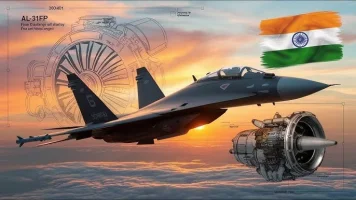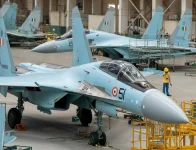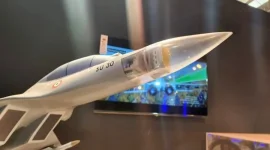- Views: 4K
- Replies: 28
The Indian Air Force's (IAF) formidable Su-30MKI fleet, the backbone of its fighter squadrons, is set to undergo a transformative upgrade with the integration of a new indigenous 64-bit mission computer.
Developed by the Defence Research and Development Organisation (DRDO), this enhancement is a core part of the "Super-30" program, designed to elevate the jet's combat capabilities to near fifth-generation levels and ensure its dominance in the skies for decades to come.
The Su-30MKI, which constitutes the largest portion of the IAF's fighter fleet with approximately 272 aircraft in service, has long been a versatile and powerful platform.
However, its original mission computer, developed in 1998, operates on a 32-bit architecture. While robust for its time, modern advancements in avionics and the complexities of network-centric warfare have rendered the older system a performance bottleneck.
This crucial upgrade will be spearheaded by the Defence Avionics Research Establishment (DARE), a premier DRDO laboratory.
The new system, a state-of-the-art Digital Flight Control Computer (DFCC), is built on a Quadraplex PowerPC-based 64-bit architecture. This represents a monumental leap in processing power, enabling the aircraft to handle complex computations, advanced radar data, and sensor fusion far more efficiently.
The enhanced computational power is critical for modern aerial combat.
It will allow the Su-30MKI to seamlessly integrate and manage sophisticated systems, including a new indigenous 'Virupaksha' Active Electronically Scanned Array (AESA) radar, advanced electronic warfare suites, and a new arsenal of long-range precision-guided munitions.
This ability to process vast amounts of data from multiple sources and present a clear, unified picture to the pilot—a key feature of 5th-generation aircraft—will significantly improve situational awareness and decision-making speed in contested environments.
In a key assurance of reliability, the software for the new mission computer adheres to the DO-178C Level-A safety standard, the highest international benchmark for aviation software. This compliance ensures the system's stability and robust performance during the most critical phases of a mission.
DARE has leveraged its extensive experience from developing advanced avionics for India's indigenous Tejas Mk1, Mk1A, and Mk2 fighters to create the new computer for the Su-30MKI.
The organisation has stated that the performance of the new DFCC is designed to be superior even to the systems developed for the Tejas, tailored specifically for the demanding requirements of a heavy multirole fighter like the Sukhoi.
The "Super-30" program aims to modernise an initial batch of 84 Su-30MKI jets, extending their operational life and ensuring they remain a versatile and lethal platform capable of executing air superiority, ground attack, and electronic warfare missions effectively against current and future threats.
This indigenous upgrade marks a significant step in India's self-reliance in critical defence technologies and its commitment to maintaining a technologically advanced air force.



